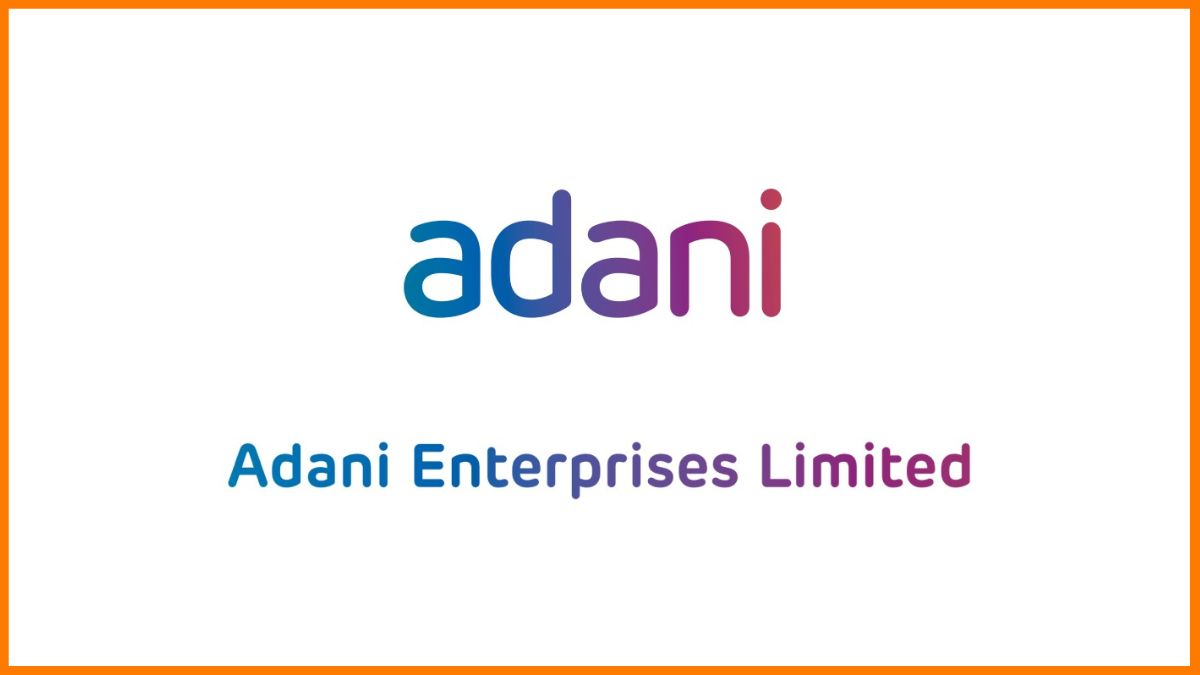The Adani group is an Indian multinational conglomerate with a revenue of about $37 billion from FY2024. The company is headquartered in Ahmedabad, Gujarat, India. Adani is a leading global integrated infrastructure player that includes diverse businesses like coal trading, coal mining, ports, power generation, multi-model logistics, renewables, gas distribution, and transmission. The Adani has always been known for its growth and vision for building the nation.
It is the largest port developer and operator in India with Mundra being the country’s largest commercial port. Having multiple ports, branches, manufacturing units, and corporate offices at various locations, Adani Group is one of the largest business units. In all this business group has around 36,000 plus employees with more than 900 third-party contractors involved in incorporating various work orders across 25 plus business units.
In April 2014, it added the fourth unit of 660 megawatts at its Tiroda Thermal Power Station, making Adani Power India’s largest power producer. In 2015, Adani was ranked India’s most trusted infrastructure brand by The Brand Trust Report 2015. The group operates mines in India, Australia, and Indonesia and supplies coal to Bangladesh, China, and other countries in Southeast Asia. In January 2018, Adani Ports and SEZ Limited added equipment and machinery to become the largest dredger fleet in India.
Companies Listed Under the Adani’s Group
- Adani Enterprise Limited
- Adani Ports and SEZ Limited
- Adani Power Limited
- Adani Transmission Limited
- Adani Green Energy Limited
- Adani Gas Limited
- Adani Wilmar Limited
The Challenges Faced by Adani Group
Solutions Applied by Adani Group
Effects on Adani Group’s Business after Implementing Solutions
Companies Listed Under the Adani’s Group

Adani Enterprise Limited

Adani Enterprises Limited is run by Gautam Adani, the enterprise handles the mining, trading, gas distribution, solar, and agribusiness divisions of the Group. This company also owns a subsidiary called Adani Gas which is a wholly owned subsidiary that executes the gas distribution business. Its real estate activities are managed by Adani Infrastructure and Developers Private Limited. The current incubation portfolio includes Mining Services, Integrated Coal Management, Road, Rail, Airports, Data centers, and Defense.
Adani Ports and SEZ Limited

Adani Ports and Special Economic Zone Limited (APSEZ) is the largest private port company and special economic zone in India. The Company is headed by Karan Adani, CEO of APSEZ. The operations of the company are Logistics and Port management and operates ports Dahej, Mundra, Hazira, Dhamra, Kattupalli, and Vizhinjam.
Along with that, the Adani Group manages terminals at the ports of Mormugao, Ennore, Vishakhapatnam, and Kandla. The logistics were initially promoted by the Mundra Port Infrastructure Development Company Limited, as an enterprise of the Government of Gujarat and Adani Port Limited.
Adani Power Limited

The company is run by Gautam Adani, Rajesh S. Adani. The company develops and maintains power projects in India. The firm has a combined installed capacity for developing and maintaining power projects across India. The company runs the following subsidiaries of 10440 MN with four thermal power projects across India.
The following subsidiaries are Adani Power Maharashtra Limited and Adani Power Limited. In 2014 Adani Power Ltd’s thermal power plant at Mundra in Gujarat is the world’s first coal-fired plant to receive carbon credit from the United Nations Framework Convention on climate change.

Adani Transmission Limited

Integrated in 2013, Adani Transmission Limited handles the commissioning, operations, and maintenance of the electric power transmission system. The holding company holds operations and maintains 8511 circuit kilometers of transmission lines that range from 400 to 765 kilovolts.
The company has the following subsidiaries; Maharashtra Eastern Grid Power Transmission Company Limited, Maru Transmission Services Service Company Limited, Hadoti Power Transmission Limited Service Limited, Raipur Rajnandgaon Warora Transmission Limited, Sipat Transmission Limited, and Chhattisgarh WR Transmission Limited.
Adani Green Energy Limited
The process of creating the world’s largest single-location solar power plant
Largest listed pure-play renewable power producer in India with a portfolio of solar and wind assets of 2545 MW operational capacity. It is the largest listed renewable company in India and aims to scale up its infrastructure to produce 18 GW by 2025 and 25 GW by 2030.
Adani Gas Limited
It is India’s largest city gas distribution company mainly serving Industrial and Residential customers in Gujarat.
Adani Wilmar Limited

Adani Wilmar Limited (AWL) is an Indian food and beverage company based in Ahmedabad. It started in 1999 as a joint venture between Adani Enterprises and Wilmar International. AWL is the largest palm oil processor in India. As of September 2024, it has 23 plants in 10 states across India and exports its products to the Middle East, Africa, and Southeast Asia.

The Challenges Faced by Adani Group
The Adani Group has multiple business units and ports at various locations. Managing employees’ attendance and timing from a central place is critical for them. Due to diversified businesses, they have different time attendance policies at different locations. It is very challenging to capture the time-attendance rules of an organization. This is because of the diversity in timing, attendance, and leave policies concerning various locations, departments, and people.
Along with automated time attendance solutions, they want to control access at their premises for safety and security concerns. For certain exceptional situations, they need immediate notifications via SMS. As remote sites are there, they want different connectivity options for devices. The integration of SAP is required which is one of the challenges. By introducing an automatic system, the company wants to make manual interventions to reduce errors and fraud.
- Gautam Adani was charged in New York for his involvement in an alleged bribery and fraud scheme worth billions of dollars, according to US prosecutors on November 20, 2024, and because of this Adani Group faced a loss of $55 billion.
- In 2023, Adani’s businesses lost $150 billion in market value after a report by short-seller Hindenburg Research accused the group of major corporate fraud. The report claimed that Adani Group had been involved in stock manipulation and accounting fraud for many years.
- Managing numerous workers’ attendance.
- Eliminate fraudulent and inaccurate payment of wages at contractors’ end.
- Monitoring each work order status determining its progress and segregating them.
- Verifying the number of workers allotted to each task under a contractor against the respective contractors’ report.
- Capturing accurate and diverse time attendance data of all workers.
- Generating customized reports to make swift decisions and timely and error-free payroll processing.
- Allotting workers to each work order based on the requirements and skills of the workers.
- Ensuring approved and proper induction of each worker at a defined level.

Solutions Applied by Adani Group
Adani group applied several solutions to fight the challenges they faced. Some of the best solutions they implemented are:
- Tracking work orders progress.
- Contractors’ self-service portal for managing workers.
- Contract Workers Management solution for 50,000 plus workers under 900 plus contractors.
- Worker Enrolment with photograph, credentials, and documents.
- Connectivity using Wi-Fi and mobile Broadband.
- Centralized data management solution for branches across multiple locations.
- Real-time notification in cases of exceptional situations.
Effects on Adani Group’s Business after Implementing Solutions
The solutions implemented by the Adani Group proved successful for the business. Adani Group witnessed growth and productivity in business.
- Increase in productivity of admin by 20%.
- Smooth and effective monitoring of work orders.
- Minimize manual interventions.
- Enhanced security with an effective worker enrolment process.
- Smooth and easy security with centralized control and monitoring reduced time spent by the Security Department.
- Easy decision-making due to customized reports and charts generated.
- Quick and effective wage calculation.
FAQs
Who is the founder of Adani Group?
Gautam Adani is the founder and Chairman of Adani Group.
When was Adani Group founded?
Adani Group was founded in 1988.
What is the revenue of Adani Group?
The Adani Group has around $37 billion in revenue from FY2024.
What are the companies under Adani Group?
Adani Group of companies list includes:
- Adani Enterprise Limited
- Adani Ports and Special Economic Zone Limited
- Adani Power Limited
- Adani Transmission Limited
- Adani Green Energy Limited
- Adani Wilmar
- Adani Gas Limited
What is the net worth of Gautam Adani?
Gautam Adani has a net worth of $69.8 billion as of 2024.





































































